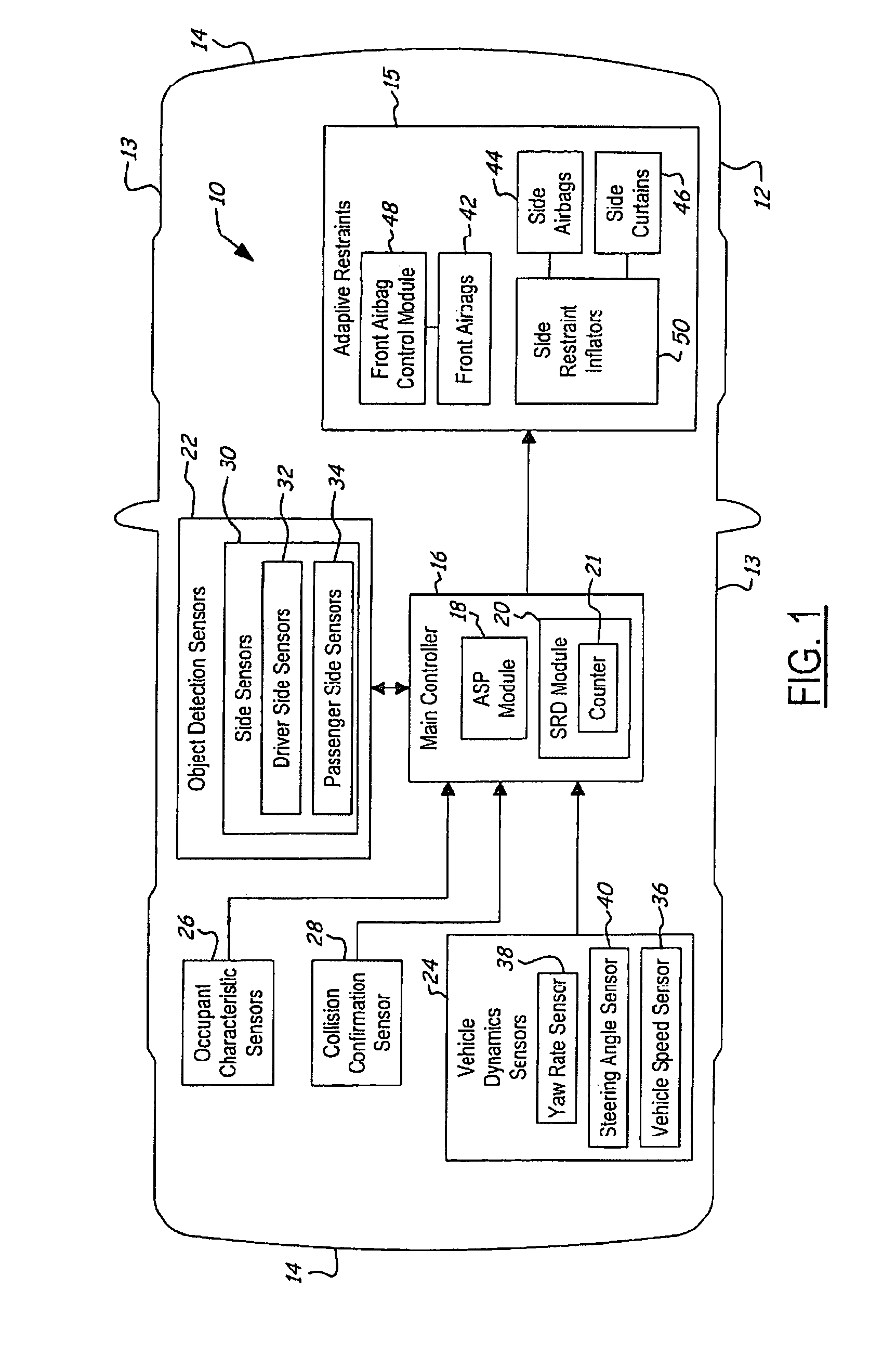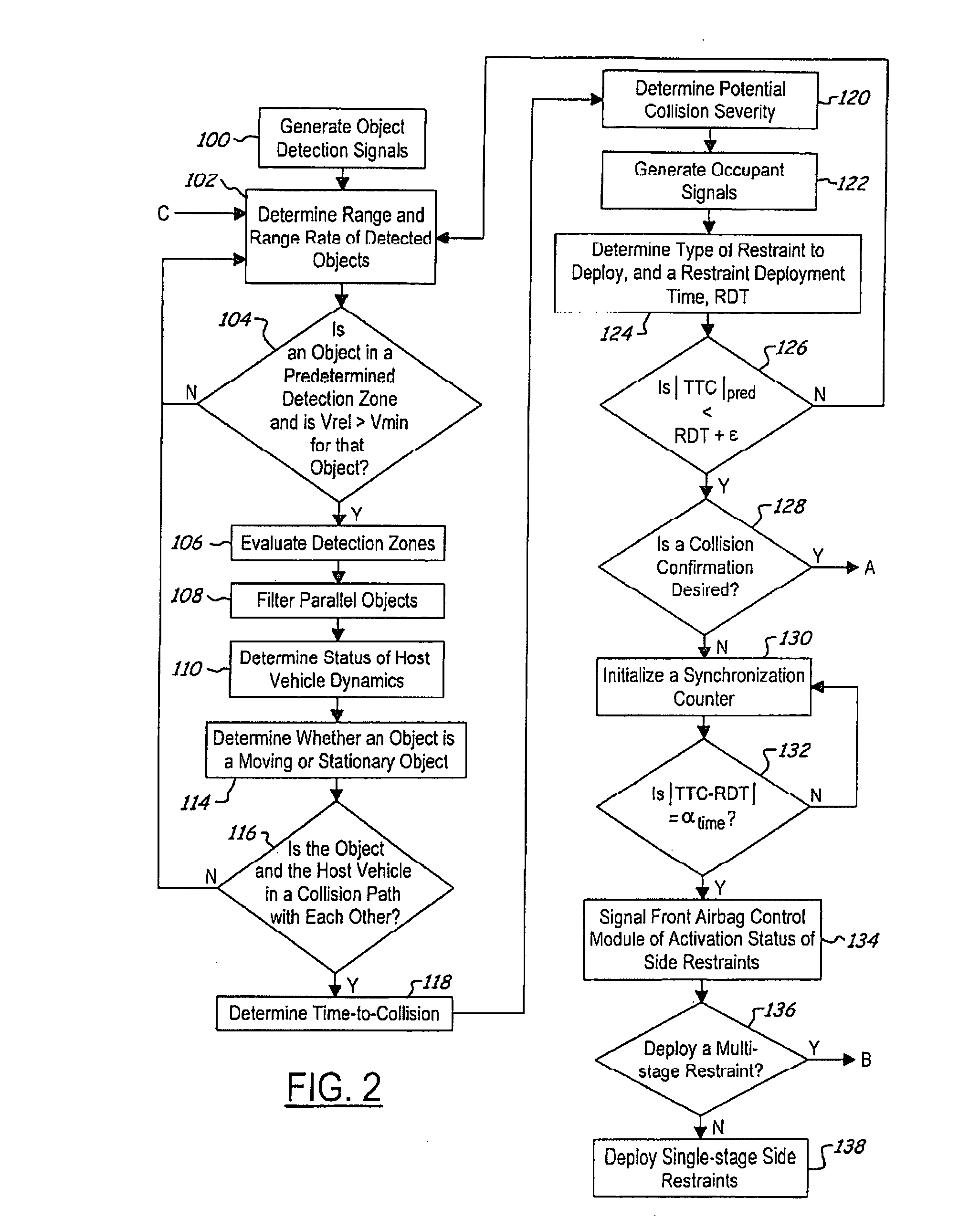Method and control system for predictive deployment of side-impact restraints
a technology of adaptive restraints and deployment systems, applied in the direction of pedestrian/occupant safety arrangements, vehicular safety arrangments, vehicle components, etc., can solve the problems of stringent activation time requirements, limited ability of current side airbag deployment systems to differentiate between severe collisions and marginal collisions, and insufficient injury mitigation, so as to minimize inadvertent deployment, prevent unwarranted deployment, and minimize the effect of vehicle occupant injury
- Summary
- Abstract
- Description
- Claims
- Application Information
AI Technical Summary
Benefits of technology
Problems solved by technology
Method used
Image
Examples
Embodiment Construction
[0019] In the following figures the same reference numerals will be used to refer to the same components. Also, in the following description, various operating parameters and components are described for multiple constructed embodiments. These specific parameters and components are included as examples and are not meant to be limiting.
[0020] Additionally, in the following description, the term “performing” may include activating, deploying, initiating, powering, and other terms known in the art that may describe the manner in which a safety restraint system or a comfort and convenience feature may be operated.
[0021] As well, in the following description, various safety restraints are discussed. The restraints may be reversible or irreversible. Reversible restraints refer to restraints that may be reset to their original form or used repeatedly without a significant amount of functional deficiency, which may be determined by a system designer. Irreversible restraints refer to restr...
PUM
 Login to View More
Login to View More Abstract
Description
Claims
Application Information
 Login to View More
Login to View More - R&D
- Intellectual Property
- Life Sciences
- Materials
- Tech Scout
- Unparalleled Data Quality
- Higher Quality Content
- 60% Fewer Hallucinations
Browse by: Latest US Patents, China's latest patents, Technical Efficacy Thesaurus, Application Domain, Technology Topic, Popular Technical Reports.
© 2025 PatSnap. All rights reserved.Legal|Privacy policy|Modern Slavery Act Transparency Statement|Sitemap|About US| Contact US: help@patsnap.com



